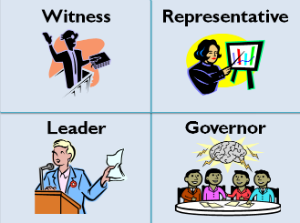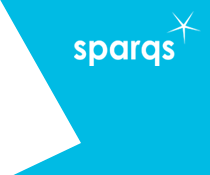As recently announced, sparqs (through Partnerships for Change) is contributing a series of articles about student engagement to the College Development Network’s “Governing in a Regional Structure” newsletter.

The second of those articles was recently published in the February issue, and explores the four hats of the student governor. It helps board members reflect on their perceptions and expectations of their student colleagues, and is reproduced below.
The questions raised by the article and by the model of the four hats can be transferable to the university sector, and indeed to other committees beyond boards of management.
How effective is student engagement in your college’s board of management?
You may be tempted to think that the answer depends on your student board members, but in fact it’s the board as a whole which determines this, and there are approaches that all board members can adopt to ensure that student engagement has the best possible impact on the board’s thinking.
Obviously, students are on boards as individuals, just like everyone else. But as students they still have a unique perspective to bring, and can inform other board members about the student experience and the work of the students’ association.
This article outlines four potential hats that student board members might wear, and the consequences of this for all board members.
Witness
‘This is my experience …’
Think of a witness in a courtroom. They speak when spoken to, answer questions with facts not analysis, and offer only their personal experience.
This can be incredibly powerful in a college board, injecting a dose of realism into abstract, strategic discussions. However, a witness will not be able to tell you about other students’ experiences unless they see them for themselves.
Representative
‘The views of students appear to be …’
A representative will, literally, re-present the views of all students. So they are likely to have a good grasp of the diversity of student experiences.
Appreciating student views can be vital for a board. However, there is more to the board’s job in terms of analysing evidence than merely following student opinion.
Leader
‘This is our policy on the matter.’
The leader draws upon their position as a senior officer of the students’ association. They have status, authority, and the backing of the students’ association’s research work and policy-making.
This provides the board with some well-informed and meaningful contributions on the different areas of the college’s work. However, offering only policy positions presents a risk of an uncompromising summit atmosphere.
Governor
‘The college’s interests appear to be …’
The governor acts in the wider interests of the college, working as an equal colleague alongside other board members.
In theory this should put the student interest at the heart of the board. But there is a risk that the student becomes so indistinct from other members that they are merely another lay member, and maybe a very inexperienced one at that. This could ultimately deny the valuable perspective they should bring as a student.
Striking a balance
Of course, there are advantages and disadvantages to each hat, and you might want to see at least a little of all four behaviours in your student members.
So it is worth considering the ideal balance of hats for a student member. Should they be equally 25% witness, representative, leader and governor? Or should one hat dominate?
And while this may create a picture of the training and support student members might require, the biggest implication is for board members as a whole. For instance, if other board members – even with good intentions – only ask student members about their own experiences, they’ll get ‘witness’ answers in return. If they ask what students think generally, it encourages “representative” answers; and so on.
So then, what approaches can non-student members take to support this ideal balance of hats? What questions should they ask, and what contributions should they be expecting? What implication does this have for all board members’ training and development?
Answer these questions, and you may find that the role of student board members is understood by, and beneficial to, the entire board.


